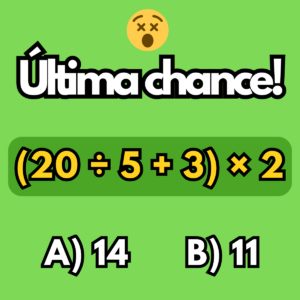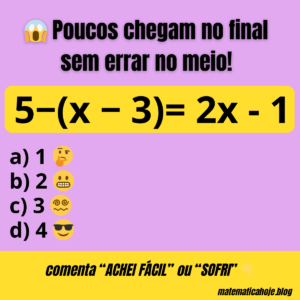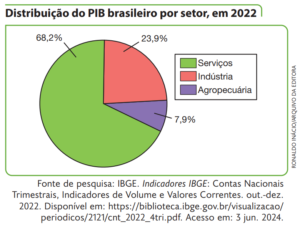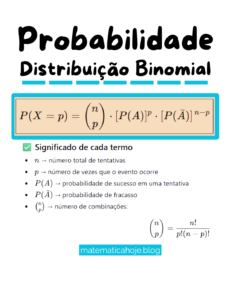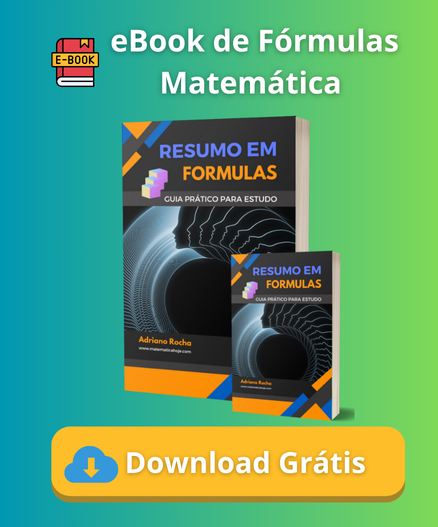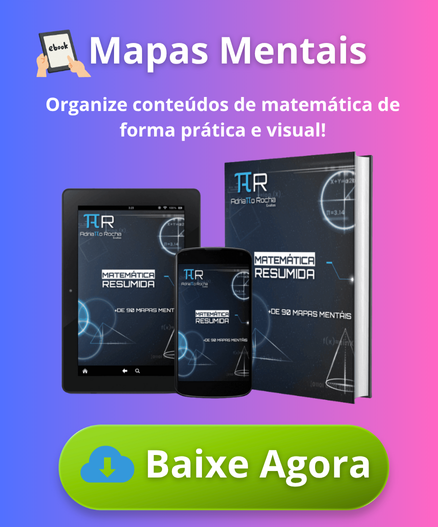Questão 42 – Conjuntos Numéricos e Intervalos Reais
Enunciado:
Determine os elementos dos conjuntos:
a) \( A = \{x \in \mathbb{N} \mid 3x – 4x – 4 = 0\} \)
b) \( B = \{y \in \mathbb{R} \mid y^2 – 7 = 0\} \)
c) \( C = \left\{a \in \mathbb{N} \mid \frac{a}{4} + 0{,}25a + \frac{3}{2}a = 2\right\} \)
d) \( D = \{x \in \mathbb{Q} \mid 3 + x^2 = 4\} \)
e) \( E = \left\{y \in \mathbb{Q} \mid \frac{y}{3} + y = \frac{1}{7} \right\} \)
f) \( F = \{x \in \mathbb{R} \mid x^2 – 4 = 0\} \)
Ver Solução
a) Resolvendo \( 3x – 4x – 4 = 0 \Rightarrow -x – 4 = 0 \Rightarrow x = -4 \)
Como \( x \in \mathbb{N} \) e -4 não é natural: \( A = \emptyset \)
b) \( y^2 – 7 = 0 \Rightarrow y = \pm\sqrt{7} \)
Como \( y \in \mathbb{R} \): \( B = \{-\sqrt{7}, \sqrt{7}\} \)
c) \( \frac{a}{4} + 0{,}25a + \frac{3}{2}a = 2 \)
Convertendo tudo para frações: \( \frac{a}{4} + \frac{a}{4} + \frac{3a}{2} = 2 \Rightarrow \frac{2a}{4} + \frac{3a}{2} = 2 \)
Somando: \( \frac{a}{2} + \frac{3a}{2} = 2 \Rightarrow \frac{4a}{2} = 2 \Rightarrow 2a = 2 \Rightarrow a = 1 \)
\( C = \{1\} \)
d) \( 3 + x^2 = 4 \Rightarrow x^2 = 1 \Rightarrow x = \pm1 \)
Como \( x \in \mathbb{Q} \): \( D = \{-1, 1\} \)
e) \( \frac{y}{3} + y = \frac{1}{7} \Rightarrow \frac{4y}{3} = \frac{1}{7} \Rightarrow y = \frac{3}{28} \)
\( E = \left\{ \frac{3}{28} \right\} \)
f) \( x^2 – 4 = 0 \Rightarrow x = \pm2 \)
\( F = \{-2, 2\} \)
Resumo: Esta questão explora a solução de equações sob restrição de conjuntos: Naturais, Racionais e Reais. Importante observar o conjunto ao qual a solução precisa pertencer.
🧠 Mapas Mentais de Matemática



